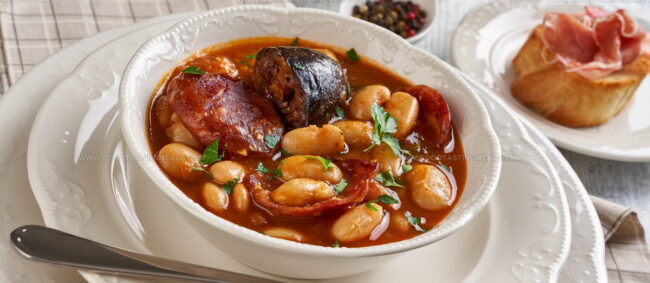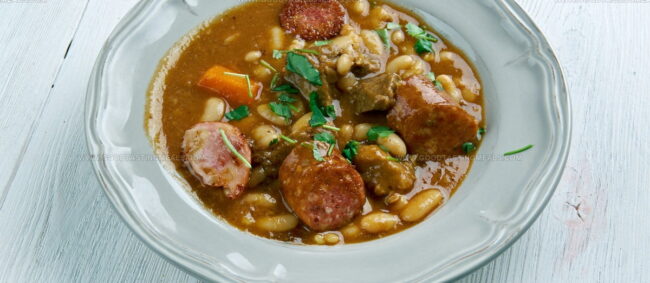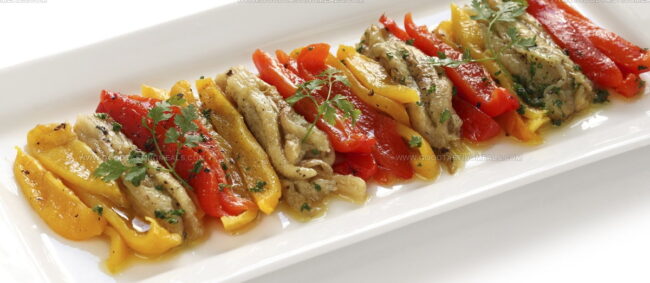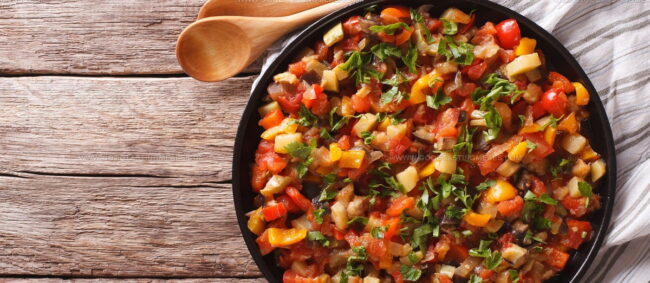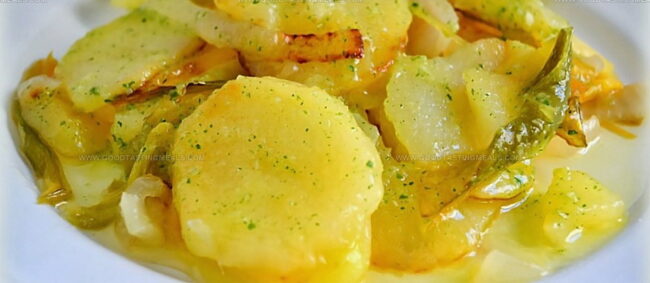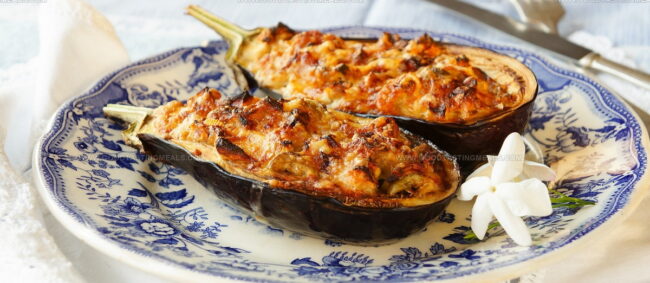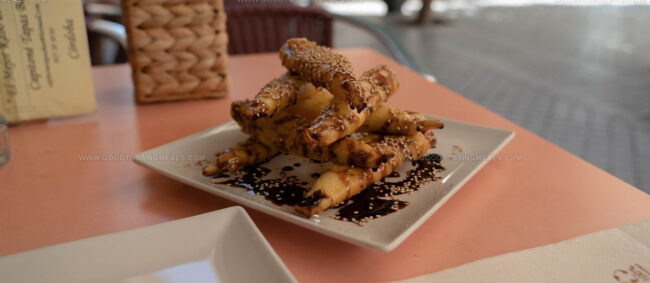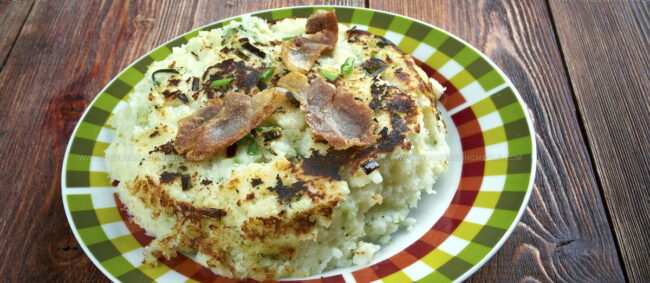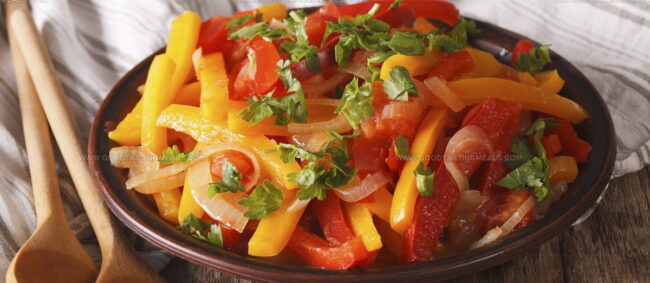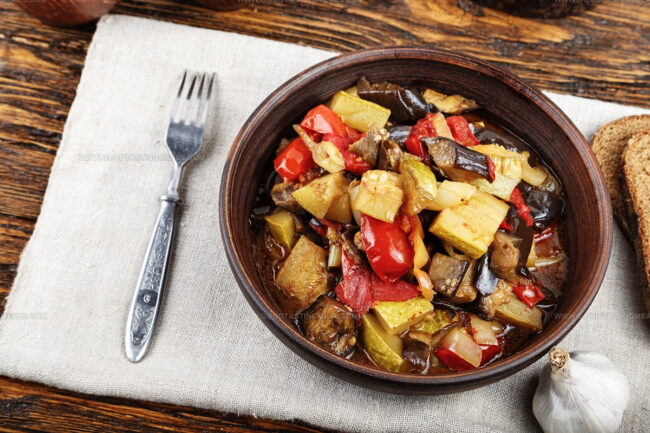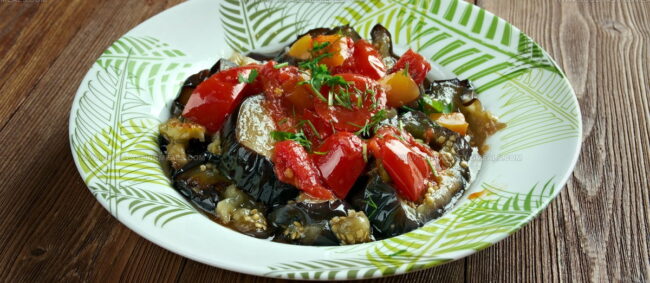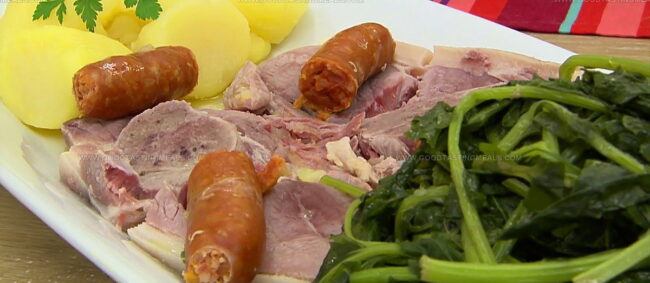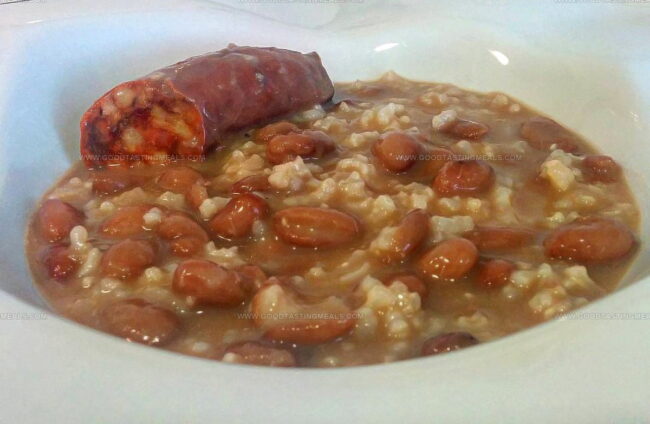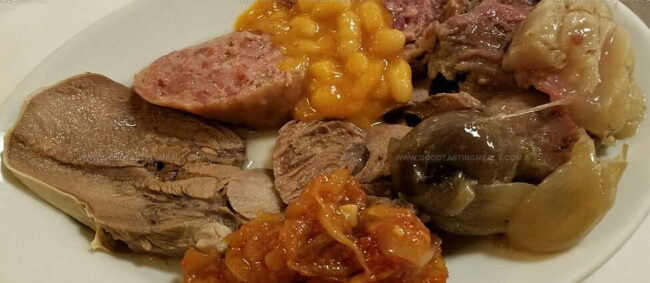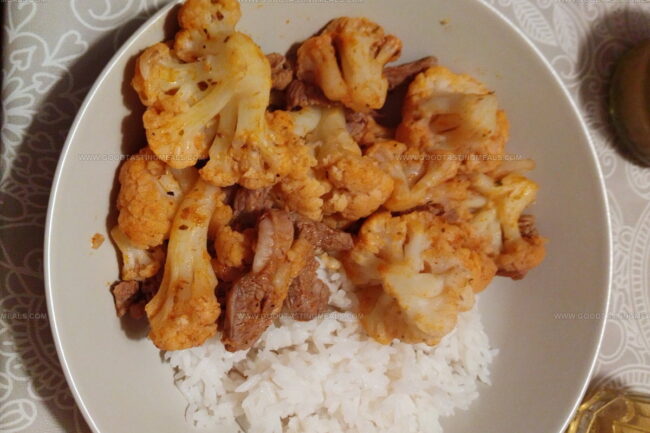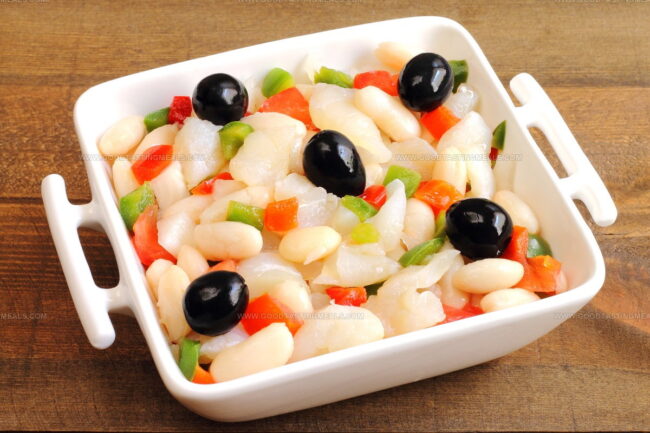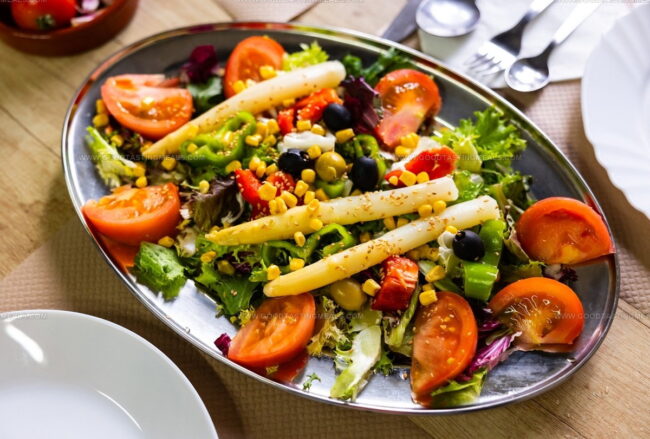21 Tasty Spanish Vegetable Dishes You’ll Want to Make Tonight
Spanish vegetables burst with vibrant flavors and cultural significance, representing a cornerstone of Mediterranean culinary traditions.
Regional ingredients transform simple produce into extraordinary gastronomic experiences that tantalize taste buds.
Rich agricultural landscapes provide exceptional raw materials for creative cooking techniques.
Mediterranean climate and fertile soil contribute to the extraordinary quality of Spanish vegetable preparations.
Passionate chefs carefully craft dishes that honor agricultural heritage and local nutritional wisdom.
Spanish vegetable cuisine reflects generations of agricultural knowledge and innovative culinary practices.
Nutritional balance and robust flavors define these remarkable culinary creations that showcase agricultural excellence.
Here are 21 great Spanish vegetable dishes that will inspire your next meal:
Spanish Vegetable Dishes Bursting with Color
Vibrant vegetable plates bring Spanish sunshine into kitchens year-round. From tapas to main courses, produce is always prepared with creativity and care.
Fabada Asturiana
Fabada Asturiana stands out as a soul-warming Spanish stew that transforms humble white beans into a legendary culinary masterpiece from Asturias.
Robust chorizo, morcilla blood sausages, and succulent pork fat infuse the dish with intense, smoky flavors that dance across your palate.
Originating between the 19th and 20th centuries, this hearty meal emerged as a practical winter comfort food for rural communities.
Smoked paprika and saffron elevate the ingredients, creating a complex flavor profile that speaks to Spanish gastronomic traditions.
Traditional recipes often incorporate olive oil to enhance the stew's richness.
Families and regions across Spain have embraced this iconic dish, making it a staple of regional cuisine.
Nutrition and warmth combine in each spoonful, offering a deeply satisfying meal.
Cocido Montanes
Cocido montañés emerges as a rustic mountain stew from Northern Spain, blending robust white beans with collard greens and rich pork ingredients like chorizo, morcilla, and bacon.
Spanish mountaineers traditionally crafted this nutrient-dense meal to sustain themselves through harsh winters.
Regional farmers perfected the recipe over generations, transforming simple ingredients into a satisfying one-pot experience.
Historical records suggest the dish originated in 17th-century Cantabria, gaining its current name in the 1960s.
Slow-simmered techniques allow complex flavors to develop, creating a deeply comforting meal.
Protein-packed meat cuts provide exceptional depth and warmth to each spoonful.
Beans serve as the foundational ingredient, absorbing intense smoky flavors from cured meats.
Winter tables across Northern Spain celebrate this hearty mountain classic with genuine pride.
Escalivada
Escalivada stands as a rustic Catalan treasure, transforming simple grilled vegetables into a smoky Mediterranean delicacy roasted whole over hot embers.
Farmers from Spain's Pyrenees mountains originally crafted this dish while tending their livestock, using eggplants, bell peppers, onions, and tomatoes as their primary ingredients.
Spanish culinary traditions inspired this technique of slow-roasting vegetables until their skins char and flavors intensify.
Each vegetable gets carefully peeled and seeded after grilling, creating a silky, smoky texture that melts in your mouth.
Seasoned with olive oil, salt, and sometimes garlic, escalivada becomes a versatile side dish or appetizer.
Its name comes from the Catalan word "escalivar," meaning to roast in embers or ashes.
Mediterranean cuisine celebrates this simple yet profound preparation method that transforms humble ingredients into an extraordinary experience.
Pisto
Pisto emerges as a vibrant Spanish vegetable medley from La Mancha, blending roasted tomatoes, onions, bell peppers, and courgettes into a flavorful symphony reminiscent of French ratatouille.
Moorish culinary influences shaped this versatile dish during historical cultural exchanges in Spain.
Mediterranean gardens inspire its colorful ingredients, which transform into a silky, rich mixture perfect for multiple serving styles.
Regional cooks often customize pisto with unique additions like potatoes, pumpkin, or savory ham pieces.
Spaniards enjoy this vegetable stew both warm as a hearty side and chilled as a refreshing starter.
Each region boasts slightly different preparation techniques, reflecting local agricultural traditions.
Nutritious and simple, pisto represents home cooking at its most authentic.
Seasonal vegetables make this dish a true celebration of Spanish regional cuisine.
Patatas A Lo Pobre
Patatas a lo pobre transforms humble ingredients into a mouthwatering Spanish potato dish bursting with rustic Andalusian flavors.
Sliced potatoes, onions, and colorful peppers sizzle in golden olive oil until tender and caramelized.
Garlic and wine vinegar add sharp depth to the vegetable medley, creating a rich and satisfying side dish.
Traditionally served alongside grilled meats, this simple recipe reflects the resourceful spirit of Spanish home cooking.
Regions throughout Andalusia embrace this economical yet intensely flavorful preparation.
Mediterranean culinary traditions shine through its uncomplicated yet sophisticated approach.
Stuffed Eggplants (Berenjenas Rellenas)
Spanish berenjenas rellenas represent a mouthwatering Mediterranean culinary adventure where roasted eggplants transform into flavorful vessels bursting with savory fillings.
Succulent ground meats like pork and beef mingle with garden-fresh vegetables such as tomatoes, zucchinis, and peppers inside perfectly hollowed eggplant shells.
Classic seasonings including garlic, oregano, thyme, and rosemary infuse each bite with robust Mediterranean flavors.
Skilled cooks carefully slice eggplants lengthwise and bake them until tender before carefully removing their inner pulp.
Mediterranean cooking traditions inspire this versatile dish that balances rustic techniques with intense taste profiles.
Garnished with fresh herbs and sometimes melted cheese, berenjenas rellenas offer a delicious glimpse into Spanish culinary heritage.
Berenjenas Con Miel
Berenjenas con miel transforms eggplant into a crispy, sweet-savory sensation that captures Andalusian culinary magic.
Spanish cooks slice eggplants thin, coating them in delicate batter before deep-frying to golden perfection.
Moorish influences shine through this unique dish, blending unexpected flavor profiles from Cordoba's rich gastronomic history.
Sesame seeds sprinkled across the crisp surface add textural complexity and nutty undertones.
Dark molasses or honey drizzled generously creates a glossy, caramelized finish that balances the vegetable's natural earthiness.
Restaurants across southern Spain serve this iconic appetizer as a testament to regional creativity.
Sesame-studded, honey-glazed eggplant slices represent a delicious crossroads of sweet and salty flavors.
Espinacas Con Garbanzos
Espinacas con garbanzos packs a nutritional punch with its hearty blend of spinach and chickpeas, representing a classic vegetarian staple from Andalusia, Spain.
Mediterranean kitchens transform simple ingredients into a robust, warming dish that sings with flavor.
Garlic, olive oil, and cumin create an aromatic base that elevates the chickpeas and fresh spinach.
Paprika and vinegar add tangy depth to the vibrant green and golden mixture.
Spanish home cooks traditionally serve this comfort food steaming hot during chilly winter months.
Fried bread often accompanies the dish, providing a crispy contrast to the soft, spiced vegetables.
Vegetarians and meat-eaters enjoy this protein-rich, soul-satisfying Spanish classic.
Trinxat
Mountainous Andorra birthed trinxat, a rustic potato and cabbage pancake that transforms humble winter ingredients into a crispy, flavorful sensation.
Frost-kissed cabbage provides the dish's signature earthiness, while potatoes anchor its hearty texture and mountain-dwelling origins.
Catalan roots define its name "trinxar," meaning to slice or chop, reflecting the preparation method of mashing and frying ingredients into golden pancakes.
Garlic and pork or bacon add rich depth to the simple peasant dish.
Small villages nestled in high altitudes pioneered this resourceful meal using minimal ingredients from challenging terrain.
Mushrooms contribute an extra layer of umami complexity to the crisp-edged pancakes.
Salt and pepper season the mixture, ensuring balanced flavors.
Olive oil transforms the humble ingredients into a satisfying, golden-brown delicacy that celebrates Andorran agricultural resilience.
Piperade
Piperade bursts with Basque culinary passion, blending vibrant red bell peppers, tomatoes, onions, and garlic into a sizzling skillet symphony that captures the spirit of southwestern France and northern Spain.
Spanish and French Basque traditions birthed this iconic dish during the early 1800s, when pepper cultivation became a regional cornerstone.
Red peppers dominate the landscape, transforming simple ingredients into a colorful masterpiece that reflects cultural identity.
Espelette pepper adds distinctive warmth and complexity to the mixture, elevating its flavor profile.
Ham and eggs frequently join the pepper medley, creating a hearty meal that satisfies hunger and celebrates regional ingredients.
October's Espelette pepper fair highlights the dish's cultural significance, drawing visitors from across the region.
Farmers carefully grow and harvest peppers, maintaining generations of agricultural heritage.
Piperade represents more than a meal - it embodies Basque culinary storytelling through its bold, passionate ingredients.
Samfaina
Bursting with Mediterranean flavors, samfaina stands as a rustic Catalan vegetable stew that captures summer's essence through its vibrant blend of eggplants, tomatoes, onions, and peppers slowly simmered in olive oil.
Originating in Catalonia, this hearty dish closely resembles French ratatouille, sharing similar ingredients and cooking techniques.
Farmers and home cooks traditionally prepare samfaina as a versatile side dish or sauce that complements meats and fish.
Restaurants across northeastern Spain serve this colorful mixture as a staple accompaniment to numerous main courses.
Mediterranean ingredients shine through each spoonful, reflecting the region's agricultural bounty.
Olive oil provides a rich, smooth base that binds the vegetables together.
Seasonal produce determines the exact composition, making every batch unique and authentic.
Tombet
Mallorcan tombet emerges as a sumptuous vegetable masterpiece celebrating Mediterranean produce through perfectly layered and roasted ingredients.
Aubergines, red bell peppers, and potatoes create its signature texture when carefully fried in olive oil before baking.
Generous tomato sauce infused with garlic and parsley crowns the dish, adding rich depth and vibrant flavor.
Native to Spain's Balearic Islands, this vegetarian specialty showcases regional agriculture and traditional cooking techniques.
Each vegetable contributes distinctive characteristics that complement one another beautifully.
Robust olive oil binds the ingredients, creating a harmonious and satisfying meal.
Preparation requires patience and precise technique to achieve optimal vegetable tenderness.
Mallorcan families have passed down this recipe through generations, preserving its authentic culinary heritage.
Lacon Con Grelos
Lacon con grelos emerges as a rustic Galician comfort meal showcasing pork ham hock's rich flavors alongside tender turnip greens, creating a soul-warming winter feast.
Galician families traditionally boil ham hock and greens together, transforming simple ingredients into a robust regional specialty.
Mountain regions of northwestern Spain treasure this dish as a winter staple, reflecting generations of agricultural traditions.
Potatoes and sausages frequently accompany the main ingredients, adding depth and texture to the plate.
Regional butchers carefully select high-quality pork cuts to ensure maximum flavor and tenderness.
Winter celebrations often feature this hearty meal as a centerpiece for communal gatherings.
Seasonal availability of fresh turnip greens determines the dish's peak preparation time.
Generations have passed down this recipe, preserving Galician culinary heritage through each carefully prepared portion.
Faves A La Catalana
Faves a la Catalana bursts with rich Catalan culinary heritage, blending tender fava beans with savory blood sausage in a rustic, soul-warming ensemble.
Mediterranean flavors dance through this hearty stew, where smoky botifarra negra mingles with crisp bacon and sweet onions.
Garlic and ripe tomatoes provide depth, while white wine and olive oil create a silky, aromatic base.
Paprika adds warm, earthy undertones that elevate each spoonful.
Spanish farmers traditionally prepared this dish during spring when fresh fava beans emerge.
Generations have treasured this one-pot meal as a comforting tribute to Catalonia's agricultural roots.
Regional ingredients transform simple components into a deeply satisfying experience that connects you directly to Spanish countryside traditions.
Puchero Canario
Puchero canario bursts with rustic Canary Islands charm, combining hearty meats, colorful vegetables, and rich cultural heritage in one warming pot.
Generations of island families have perfected this traditional stew, blending tender pork, chicken, and chorizo with protein-packed chickpeas.
Mountain vegetables like cabbage, green beans, and sweet potatoes create a robust flavor profile that reflects the archipelago's agricultural bounty.
Corn and pumpkin add subtle sweetness and texture to the complex dish.
Carrots and courgettes contribute additional nutrients and depth to this comforting meal.
Fat from the meats helps develop a deep, satisfying broth that warms you from inside out.
Seasonal ingredients and personal touches make puchero canario more than just a meal - it's a celebration of Canary Islands cuisine.
Olla De San Anton
Olla de San Anton bursts with rustic Spanish flavors, combining hearty pork remnants from traditional pig slaughters with rich beans and rice.
Rooted in Granada's culinary heritage, this wintertime stew celebrates Saint Anthony's Day festivities during early February.
Resourceful locals transform preserved meat scraps into a warming one-pot meal that reflects rural cooking traditions.
Regional restaurants eagerly prepare limited batches using authentic family recipes passed through generations.
Pork cuts like chorizo, bacon, and various leftover meats create deep, complex flavor profiles.
Tender beans and rice absorb the meat's savory juices, creating a satisfying peasant dish.
Winter's chill drives locals to seek comfort in this substantial meal that wastes nothing.
Granada's mountainous landscape and agricultural history shine through every spoonful of this humble, nourishing stew.
Pinto Beans And Rice (Judias Pintas Con Arroz)
Judias pintas con arroz explodes with Spanish comfort through a hearty blend of pinto beans and rice that warms Mediterranean kitchens.
Spanish families cherish this classic one-pot meal for its rich, smoky flavors and satisfying textures.
Olive oil and butter create a luxurious base that deepens the dish's earthy profile.
Paprika adds a subtle warmth and reddish hue to the beans and rice.
Flour helps thicken the sauce, creating a creamy consistency that hugs each grain of rice.
Salt balances the complex flavors, ensuring every bite feels like a warm embrace.
Generations have passed down this simple yet soul-satisfying recipe across Spanish households.
Bollit
Bollit captures Valencia's rustic culinary spirit through a hearty vegetable stew bursting with Mediterranean flavors and simple ingredients.
Fresh potatoes form the foundation of this traditional dish, creating a comforting base that locals cherish.
Onions, carrots, and green beans add vibrant color and depth to the recipe's classic preparation.
Olive oil and vinegar provide a tangy seasoning that enhances the vegetable medley.
Families typically serve bollit as a satisfying side dish during evening meals.
Spanish kitchens celebrate this unpretentious yet flavorful stew as a testament to Valencia's agricultural heritage.
Guiso De Coliflor
Guiso de coliflor sparks Spanish culinary magic through its complex flavor profile blending sweet and savory ingredients.
Spanish home kitchens transform cauliflower into a rustic masterpiece combining robust chorizo with delicate pine nuts and plump raisins.
Paprika adds warm depth to the dish while fresh parsley brings bright green notes.
Cooks first boil cauliflower florets in salted water until tender and slightly crisp.
Sautéed onions and garlic create a fragrant base for the stew's rich foundation.
Chopped tomatoes introduce moisture and slight acidity to balance the meat's intense flavor.
Olive oil helps meld all ingredients into a harmonious mixture.
Serving this traditional stew reveals Spain's talent for creating memorable meals from simple ingredients.
Empedrat
Empedrat bursts with Mediterranean flavors, combining salted cod and white beans in a refreshing Catalan salad that celebrates summer's simplicity.
Cod crumbles generously through tender beans, creating a protein-rich canvas for diced tomatoes and bell peppers.
Hard-boiled eggs add creamy texture to the vibrant mix of ingredients.
Black olives contribute a briny punch that elevates the dish's complexity.
Olive oil and vinegar dress the salad with classic Spanish seasoning.
Chilling enhances the flavors, making it a perfect warm-weather meal.
Catalans traditionally prepare this dish using white beans, though chickpeas or lentils work beautifully as alternatives.
Turnips In Cider (Nabos A La Sidra)
Nabos a la sidra transforms humble Spanish turnips into a rustic culinary masterpiece bursting with regional Asturian flavors and comforting warmth.
Spanish cooks carefully simmer tender turnips in golden butter until they reach a delicate, almost translucent texture.
Local traditions guide this simple preparation, where crisp apple cider reduces and mingles with rich chicken stock.
Aromatic garlic and fresh parsley add depth to the earthy vegetable base.
Bay leaves infuse subtle complexity into the simmering liquid.
Each ingredient contributes to a harmonious balance of sweet and savory notes.
Slow cooking allows the turnips to absorb the nuanced cider essence.
Seasoned with salt and pepper, this traditional dish offers a glimpse into Asturian countryside cooking.
What Are the Most Common Vegetables Used in Spanish Cuisine?
Spanish cuisine is renowned for its vibrant flavors and reliance on fresh, seasonal vegetables that add color, texture, and nutrition to its diverse dishes. Here are some of the most commonly used vegetables that form the backbone of traditional Spanish cooking:

